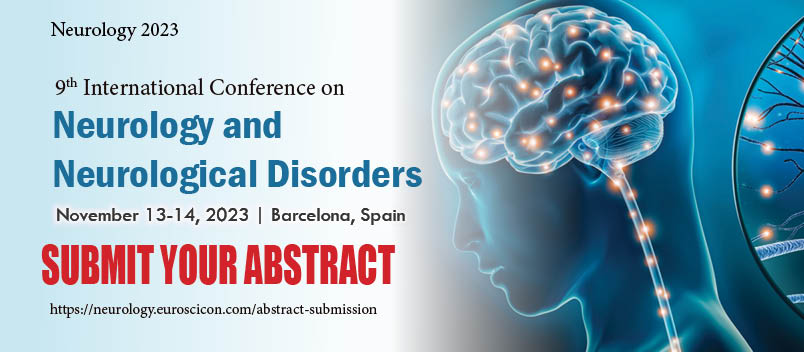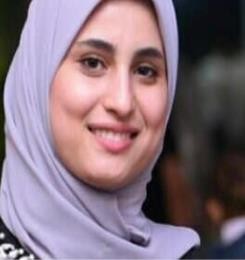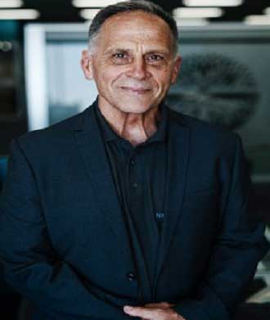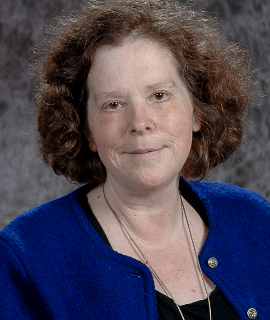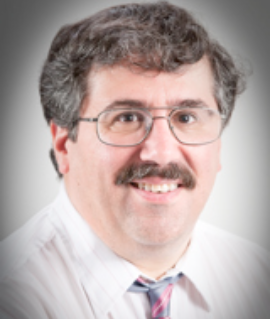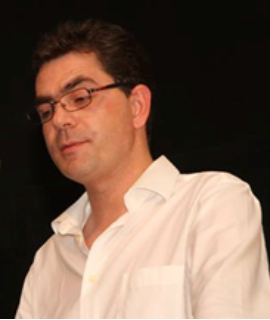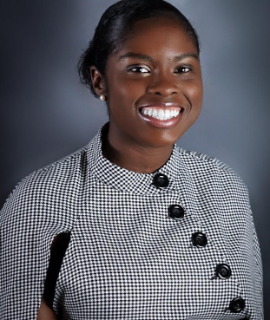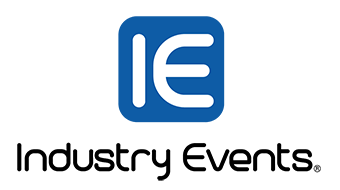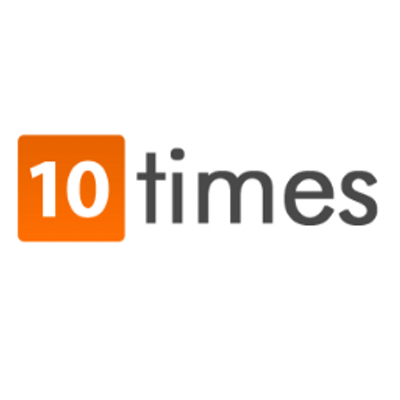NEUROLOGY 2023
About Conference
On behalf of the organizing committee, we are delighted to invite experts in the field of Neurology and Psychology from around the world to our prestigious conference “9th International Conference on Neurology and Neurological Disorders” scheduled during November 13-14, 2023 at Barcelona, Spain with the theme of “Medical breakthroughs and cutting-edge emerging technologies that transform the future of neurology".
The conference aims to bring together all researchers, scientists, students, professionals working in the field of neurology and. Neurology 2023 will offer a wide range of scientific sessions consisting of keynote lectures, plenary sessions, poster presentations, and e-poster presentations.
Neurology 2023 aims to bring together neurologists, psychologists, professors, researchers, as well as students and all those who are trying to understand brain function and psychology from around the world, providing them with a platform to discuss the different new and innovative. This year's conference will provide a basis for networking with eminent personalities.
The world's leading expert in organizing academic, scientific, and business conferences, meetings, symposia, and exhibitions in various vertical and horizontal sectors, including medical, pharmacy, engineering, science, technology, and business to advance scientific research is Euroscicon Ltd. With the kind assistance and collaboration of our 30,000 editorial board members and more than 1,000 scientific societies, we annually host over 3,000 international events, including more than 1,000 conferences, symposia, and workshops throughout the United States, Europe, the Middle East, and Asia. The DOI generated by CROSSREF is included in special issues of our 700+ international open access journals that publish all conference proceedings.
- The sponsoring journals for the conference and the conference book proceedings will both publish all approved abstracts.
- Each abstract will be given a Cross Ref DOI number. Possibility to hold a workshop with your team members
- One-on-one meetings with keynote speakers, OCM, and prominent figures to plan the future course of work.
- The chance to lead a session.
- The organizing committee's certification.
- Specific keynote a page will be made to increase the exposure of your scientific study.
- Massive Discounts for Group Registration, among other things.
- Directors of the Associations for Neurology and Psychology.
- Researchers/Scientists in Psychiatry.
- Psychologists and neurologists.
- Junior/senior research fellows in the fields of psychology, nursing, and health care student.
- Directors of pharmaceutical firms.
Sessions and Tracks
Track 01: Clinical Neurophysiology
Clinical neurophysiology is a branch of medicine that analyses the central and peripheral neural systems by observing bioelectrical activity, both spontaneous and induced. It includes pathophysiology research as well as clinical strategies for diagnosing disorders affecting both the central and peripheral nervous systems. In the discipline of clinical neurophysiology, tests aren't restricted to those performed in a lab. It is regarded as a follow-up to a neurology consultation.
Stroke is the third largest cause of death and the most common cause of acquired neurologic disability. Excitotoxicity starts a series of processes that contribute to tissue death during ischemic stroke, very soon after the onset of the localized perfusion deficit. It is usual in daily clinical practice to be asked to establish a stroke prognosis soon after the index event. This activity necessitates caution and knowledge. Clinical severity is the most powerful predictor of stroke outcome, but age, infarct volume and location, etiology, revascularization treatment, and comorbidities are other important factors.
- Repetitive stimulation
- Visual evoked potentials
- Electroretinography
- Polysomnography
- Intracranial electrode stimulation
- Ischemic stroke
- Hemorrhagic stroke
- Transient ischemic attack (TIA)
- Thrombotic Stroke
- Embolic Stroke
- Intracerebral Stroke
- Subarachnoid Stroke
Track 02: Neurological Disorders and Stroke
The central and peripheral nervous systems are affected by neurological disorders. Stroke is one of the leading causes of disability worldwide, but its brain impact has gone unnoticed since it is classed as a cardiovascular disease by the WHO. Stroke has been classified as a neurological disorder in the most recent revision of the WHO International Classification of Diseases (ICD-11). This change not only acknowledges that neurologists treat stroke patients and that stroke survivors must live with life-altering neurological consequences, but it is also likely to raise awareness of the burden of stroke and lead to increased funding for stroke research and better care for stroke patients.
- Acute Spinal Cord Injury
- Alzheimer's Disease
- Cerebral Aneurysm
- Epilepsy and Seizures
- Muscular Dystrophy
- Ischemic Stroke
- Thrombotic Stroke
- Embolic Stroke
- Hemorrhagic Stroke
- Intracerebral Stroke
- Transient Ischemic Attack (TIA)
- Subarachnoid Stroke
Track 03: Alzheimers and Parkinsons Diseases
Alzheimer's disease is a progressive brain disease that takes a toll on memory and thinking skills, as well as the capacity to carry out even the most basic tasks. Symptoms of Alzheimer's disease usually show later in life in most persons. Experts estimate that more than 6 million Americans, the majority of whom are 65 or older, may have dementia caused by Alzheimer's disease. Alzheimer's disease is now the sixth biggest cause of mortality in the United States, but new estimates suggest it may be in third place, just after heart disease and cancer, as a cause of death among the elderly.
Parkinson's disease (PD) is a neurodegenerative condition that primarily affects dopamine-producing ("dopaminergic") neurons in the substantia nigra region of the brain. Symptoms usually appear gradually over time. Because of the variability of the condition, the course of symptoms varies from one person to the next. The cause is still a mystery. Although there is no cure, there are a variety of treatment options available, including drugs and surgery. While Parkinson's disease is not lethal in and of itself, it can cause catastrophic complications. Complications from Parkinson's disease are the 14th leading cause of mortality in the United States, according to the Centers for Disease Control and Prevention (CDC).
- Multiple System Atrophy (MSA)
- Progressive Supranuclear Palsy (PSP)
- Corticobasal Syndrome (CBS)
- Dementia with Lewy bodies (DLB)
- Drug-induced Parkinsonism.
- Vascular Parkinsonism (VP)
Track 04: Neuropsychology and Addiction
The term ‘addiction' comes from the Latin verb addicere, which means ‘to enslave.' It is defined by a perceived lack of control or autonomy over one's behavior. Indeed, addicts' continued abuse of drugs despite apparent awareness of detrimental consequences shows that addictive behavior may be characterized by impairments in inhibitory control, decision-making, and affect regulation. Recent neuroimaging studies in a range of substance-abusing populations have linked deficits in frontal cortical networks. The domains of attention, short-term memory, visuospatial abilities, postural stability, and executive functions (such as problem-solving, mental flexibility, judgement, working memory, response inhibition, and decision-making) show the most consistent findings of neuropsychological impairment in heavy and long-term drinkers, with declarative memory, language skills, and declarative memory being relatively spared. It's uncertain whether there's a link between lifetime exposure and the development of cognitive issues.
- Drug Addiction
- Addictive Behavior
- Neuroimaging
- Neural Impacts of Substance Abuse
Track 05: Neuroimmunology and Neurological Infections
Neuroimmunology is a field that combines neurology (the study of the neurological system) and immunology (the study of the immune system) into one discipline. Neuroimmunologists study the interplay between these two complex systems throughout development, homeostasis, and injury response. One of the long-term goals of this rapidly growing research area is to improve our understanding of the pathology of some neurological diseases, some of which have no known cause. As a result, neuroimmunology aids in the development of new pharmacological treatments for a variety of neurological disorders.
Neurological infections are a broad category that includes a wide range of conditions that penetrate and damage the nervous system. Despite advancements in therapy and the development of early diagnosis procedures, many of these disorders can cause severe, chronic, and even life-threatening issues for those who are affected. Infections of the central nervous system (CNS) present a particular challenge to doctors because of the potential for morbidity and mortality as well as the inherent difficulty in treating them.
- Fungal infections
- Parasitic infections
- Prion diseases
- Bacterial infections such as Lyme disease, tuberculosis, syphilis
- Brain abscess
Track 06: Neuropharmacology and Neurochemistry
The study of how medications impact cellular function in the nervous system, as well as the neurological mechanisms by which they influence behavior, is known as neuropharmacology. Behavioral and molecular neuropharmacology is the two primary disciplines of neuropharmacology. The study of how drugs affect human behavior (neuropsychopharmacology) is a focus of behavioral neuropharmacology, as is the research of how drug dependency and addiction affect the human brain. The study of neurons and their neurochemical interactions is known as molecular neuropharmacology, and it aims to discover medications that improve neurological function.
Neurochemistry is the study of chemicals that control and influence the physiology of the nervous system, such as neurotransmitters and other compounds like psychopharmaceuticals and neuropeptides. Neurochemicals influence the function of neurons, synapses, and neural networks, according to this branch of neuroscience. Neurochemists study the biochemistry and biology of organic compounds found within the nervous system, also as their roles in neurological processes like cortical plasticity, neurogenesis, and differentiation.
- Neuropsychopharmacology
- Behavioral neuropharmacology
- Molecular neuropharmacology
- Neural chemicals
- Neurotransmitters
Track 07: Neurorehabilitation
Neurorehabilitation centers are designed to treat patients with the nervous system or neurological disorders. Rehabilitation aims to increase function, reduce cripple symptoms, and improve a patient’s quality of life. There are different types of rehabilitation treatments like physiotherapy, occupational therapy, rehabilitation psychology, speech and swallow therapy, vision therapy, and language therapy, and therapies focused on daily function and community re-integration depends on the areas of the body affected by the neurological condition.
- Physiotherapy: Physiotherapists
- Occupational Therapy
- Rehabilitation Psychology
- Physiological psychology
Track 08: Neurosurgery and Spine
Neurosurgery (also known as neurological surgery) is a branch of medicine that focuses on the prevention, diagnosis, and treatment of ailments of the spine, brain, and nervous system. The surgical specialty of neurosurgery tackles diseases and abnormalities of the brain and spinal cord. Because of nerve root dysfunction, back pain can cause neurological symptoms such as numbness, muscle weakness, and loss of bowel and bladder control. These symptoms indicate that, rather than conservative therapies, neurosurgery is required to treat the underlying cause of back pain. Discectomy, laminectomy, and spinal fusion surgery are all neurosurgical procedures used to relieve back pain. There is a larger chance of additional nerve injury and infection in neurosurgery, which can lead to paralysis.
- Laminectomy
- Micro discectomy
- Traditional Lumbar Fusion
Track 09: Paediatric Neurology and Epilepsy
From fetal life to adulthood, Paediatric neurology (PN) focuses on the diagnosis, comprehensive therapy, and research of conditions of the central and peripheral nervous systems. A child neurologist, often known as a pediatric neurologist, is a specialist who specializes in diagnosing children with nervous system disorders. The brain, spine, nerves, or muscles can all be the source of nervous system problems. Seizures, migraines, and developmental delays are all possible outcomes. Children's neurologists work with them from infancy through young adulthood.
Epilepsy is a chronic condition characterized by recurring, spontaneous seizures. If a person has two unprovoked seizures (or one unprovoked seizure with the possibility of more) that are not caused by a recognized and reversible medical disease such as alcohol withdrawal or extremely low blood sugar, they are diagnosed with epilepsy. Epilepsy affects people of all ages and is the fourth most common neurological illness. The terms "epilepsy" and "seizure disorders" are interchangeable. Epilepsy is characterized by unpredictably occurring seizures and can result in a variety of other health issues.
- Concussion
- Neonatal neurology
- Brain malformations
- Headache/migraine
- Metabolic diseases affecting the nervous system
- Neuro-oncology
- Pediatric sleep disorders
- Developmental disorders including autism
- Pediatric neuromuscular disorders including muscular dystrophy and congenital myopathies
- Neurological complications of other pediatric diseases
Track 10: Molecular Genetics and Neurobiology
Molecular genetics is defined as “the application of recombinant DNA techniques to modify genetic information within and across plants, animals, and microorganisms.” Molecular genetics allows researchers to identify the genes responsible for a specific brain function. A human cell contains around 30,000–60,000 genes, according to the human genome project. Neurons are distinct from other cells in that they express a unique set of genes.
The study of nervous system cells and their arrangement into functional circuits that process information and mediate behavior is known as neurobiology. It is a branch of biology as well as neuroscience. Neurobiology is distinct from neuroscience, which is a considerably wider field that encompasses any scientific investigation of the nervous system. The field investigates the functions of the nervous system, the brain, and related tissues such as the spinal cord.
- behavioral genetics
- classical genetics
- cytogenetics
- molecular genetics
- developmental genetics
- population genetics
Track 11: Psychology, Cell & Molecular Biology
The study of biology at the molecular level is known as molecular biology. Other branches of biology and chemistry, particularly genetics and biochemistry, intersect with this field. Understanding the interactions between the many systems of a cell, such as the interrelationships of DNA, RNA, and protein synthesis, and knowing how these interactions are regulated, is the focus of molecular biology. Cell biology encompasses both the vast diversity of single-celled creatures such as bacteria and the numerous specialized cells found in multicellular species such as humans. The basic and fundamental principle of cellular biology is that the cell is the primary unit of life.
- Abnormal Psychology
- Behavioral Psychology
- Biopsychology
- Clinical Psychology
- Cognitive Psychology
- Comparative Psychology
- Counseling Psychology
Track 12: Clinical and Translational Neurology
Clinical neurology is a branch of neuroscience devoted to the scientific investigation of fundamental mechanisms underlying diseases and disorders of the brain and central nervous system. It seeks to discover new ways of conceiving and diagnosing such conditions, as well as new therapies.
Basic neuroscience research is translated or developed into clinical applications and innovative therapeutics for nervous system disorders in the discipline of translational neurology. Deep brain stimulation, brain machine interfaces, neurorehabilitation, and the creation of sensory nervous system devices such as auditory implants, retinal implants, and electronic skins are all part of this field.
- Clinical neurophysiology
- Neurodevelopmental disabilities
- Vascular neurology
- Behavioral neurology
- Child neurology
Track 13: Neuroscience and Artificial Intelligence
Artificial intelligence is already proving to be a valuable tool in the field of neuroscience. It aids in our understanding of how the human brain functions as well as the advancement of neuroscience. In the history of artificial intelligence, neuroscience has played a significant role. It has been used as a model for creating AI that is human-like. Neuroscience can inspire us to create AI systems in two ways. One is to develop neural networks that replicate brain structure, and the other is to emulate human intelligence. The emergence of more powerful processors and ever-increasing amounts of training data has contributed significantly to AI's success. Artificial intelligence advancements can aid in the advancement of neuroscience and the unlocking of the brain's secrets. It enables neuroscientists and researchers to create more accurate models of the human brain.
- Machine learning
- Neural Network
- Robotics
- Expert Systems
- Fuzzy Logic
- Natural Language Processing
Track 14: Geriatric Psychiatry and Neurology
Geriatric psychiatry (GPsy) is the practise of psychiatry in older adults, who are traditionally described as those who are above the age of 65. Geriatric psychiatry focuses on the biology and psychological elements of normal ageing, the mental consequences of acute and chronic physical illness, and the biological and psychosocial aspects of the pathology of primary psychiatric problems in older people. Geriatric psychiatrists work to prevent, evaluate, diagnose, and treat mental and emotional illnesses in the elderly, as well as to enhance psychiatric care for both healthy and unwell senior patients.
In terms of situating disease and therapy in the context of projected ageing changes in neurochemistry, neurohistology, neuroanatomy, neurophysiology, and neuroimmunology, the ageing nervous system presents problems. The branch of medicine that investigates neurologic problems in the elderly is known as geriatric neurology. Geriatric neurologists highlight the specific problems of caring for the old, as well as the changes that will be required at several levels to optimize care.
- Neurodegenerative disorders
- Delivery of care
- Drug therapies
- Therapeutics in dementia
- Neuropsychology
- Approaches from the viewpoints of health services research, mental health, and health systems
Track 15: Cognitive Neuroscience and Psychology
The study of how the brain enables the mind is known as cognitive neuroscience. Brain science is the study of how individual neurons works together to build the complex neural structures that make up the human brain. Cognitive science employs cognitive psychology and artificial intelligence technologies to develop and evaluate models of higher-level cognition like thought and language. This is where cognitive neuroscience comes in. It connects higher-level cognitive activities to well-known brain structures and neuronal processing mechanisms.
The study of internal mental processes, such as perception, thinking, memory, attention, language, problem-solving, and learning, falls under the umbrella of cognitive psychology. Despite the very fact that it's a comparatively new discipline of psychology, it's swiftly become one among the foremost popular subfields.
- Attention
- Change blindness
- Consciousness
- Decision-making
- Learning
- Memory
- Language
- Mirror neurons
- Perception
- Social cognition
- Emotions
- Clinical Psychology
- Cognitive Psychology
- Counseling Psychology
- Developmental Psychology
- Educational Psychology
- Experimental Psychology
- Forensic Psychology
- Health Psychology
Track 16: Neurobiology and Behavior
The brain is the meeting point of our genes and our surroundings—where nature and nurture meet. Our social environment has an impact on our brain circuitry and biochemistry, both of which are regulated by hereditary factors. These neurobiological mechanisms, in turn, can have an impact on behaviors. The study of the biological mechanisms by which neural systems mediate behavior is known as neurobiology. Much of neurobiology has focused on nervous system cells over the last half-century. The structure and physiology of nerve cells (neurons) and supporting glial cells, as well as the functional contacts (synapses) produced between neurons, have all been thoroughly studied.
- Neurophysiology
- Neuroanatomy
- Neuropharmacology
- Behavioral neuroscience
- Developmental neuroscience
- Cognitive neuroscience
- Systems neuroscience
- Molecular neuroscience
Track 17: Human Brain Mapping
Brain mapping is a set of neuroscience approaches based on mapping (biological) values or features onto spatial representations of the (human or non-human) brain to produce maps. Brain mapping is also defined as the use of imaging to research the structure and function of the brain and spinal cord (including intra-operative, microscopic, and endoscopic and multi-modality imaging). Human brain mapping is an experimental discipline that uses a combination of experimental psychology, human neuroscience, and noninvasive neuroimaging to establish structure-function correspondences in the brain.
- Regional cerebral blood flow (rCBF)
- Regional metabolic rate of glucose (rCMRglc)
- Near infrared spectroscopy (NIRS)
- Electroencephalography (EEG)
- Magnetoencephalography (MEG)
Track 18: Brain Injury and Behavioral Neuroscience
Any injury to the brain, skull, or scalp is taken into account a head injury. A traumatic brain injury can range from a minor bump or bruise to a severe head injury. A traumatic brain injury can range from a minor bump or bruise to a severe head injury. Concussions, skull fractures, and scalp wounds are all common head injuries. Depending on what caused your head injury and how severe it is, the implications and treatments differ dramatically. Traumatic brain injury (TBI) is a nondegenerative, noncongenitally lesion to the brain caused by an external mechanical force, which can result in permanent or temporary impairment of cognitive, physical, and psychosocial functions, as well as a lowered or changed level of consciousness.
The study of the biological foundation of behavior in humans and animals is referred to as behavioral neuroscience. This field studies the neurotransmissions within the brain also because the psychological events that occur as a result of biological activity.
- Sensation and perception
- Motivated behavior (hunger, thirst, sex)
- Control of movement
- Learning and memory
- Sleep and biological rhythms
- Emotion
Track 19: Brain Stimulation and Imaging
Brain imaging is the study of the deconstruction or activity of the brain through the full cranium in noninvasive computerized ways, similar to magnetic resonance imaging, calculated tomography, and positron emigration tomography. See also nuclear imaging.
- Electroencephalography (EEG)
- Positron Emission Tomography (PET)
- Magnetic Resonance Imaging (MRI)
Track 20: Biology of Aging and Neurogenesis
Most body systems experience gradual changes as we age. Understanding the cellular and molecular processes behind these changes, as well as those that accompany the beginning of age-related disorders, is the focus of ageing biology research. Experiments can be devised to better understand when and how pathological alterations begin as scientists learn more about these processes, providing vital hints toward creating therapies to prevent or treat disease.
Adult neurogenesis, or the generation of functional neurons from adult neural progenitors, occurs in limited brain regions throughout life in animals. Over the last decade, great progress has been made in answering questions about practically every element of adult neurogenesis in the mammalian brain.
- The Neuroendocrine Theory
- The Free Radical Theory
- The Membrane Theory of Aging
- The Decline Theory
- The Cross-Linking Theory
- Developmental neurogenesis
- Adult neurogenesis
Track 21: Molecular Neuroscience and Neurodegeneration
In its drive to understand the brain, neuroscience is intrinsically interdisciplinary. Molecular neuroscience is a branch of neuroscience that uses molecular biology, molecular genetics, protein chemistry, and other approaches to study the biology of the nervous system. Much of molecular and cellular neuroscience is currently framed in terms of translational research or devoted to the development of systems neuroscience tools. As a result, biological process research is becoming increasingly focused on disease-related events, molecules are viewed simply as potential tools, and fewer fundamental issues about how the brain functions are being addressed.
Neurodegeneration is a frequent ultimate route in ageing and neurodegenerative disorders that results in irreversible neuronal damage and death. In the absence of either efficient treatment strategies or a clear understanding of the unique pathophysiology of neurogenerative disease states, the incidence of neurodegeneration is increasing drastically as the population ages.
- Behavioral epigenetics
- Behavioral genetics
- Cellular neuroscience
- Computational neuroscience
- Connectomics
- Imaging genetics
- Integrative neuroscience
Track 22: Neuroinformatics and Computational Neuroscience
The field of neuroinformatics combines informatics and neuroscience. Artificial neural networks are used to process neuroscience data and information in neuroinformatics. Neuroinformatics is a branch of study concerned with the creation of neuroscience data and knowledge bases, as well as computer models and analytical tools for sharing, integrating, and analyzing experimental data and the advancement of hypotheses about how the nervous system works. Neuroinformatics is a discipline of neuroscience that studies many elements of neurological systems. It does not deal with matter or energy.
Computational neuroscience is a discipline of neuroscience that studies the principles that regulate the development, structure, physiology, and cognitive capacities of the nervous system using mathematical models, theoretical analyses, and abstractions of the brain. Computational neuroscience is a subfield of theoretical neuroscience that uses computational simulations to evaluate and solve mathematical models; yet, the two subjects are sometimes used interchangeably.
- Deep Learning, Artificial Intelligence and Machine Learning
- Human psychology
- Medical sciences
- Mental models
- Computational anatomy
- Information theory
Track 23: Neurodegenerative Diseases and Stress
Millions of people throughout the world suffer from neurodegenerative diseases. over time and eventually die in neurodegenerative conditions. Although therapies may alleviate some of the physical Nerve cells in the brain and peripheral nervous system lose function or mental symptoms associated with neurodegenerative disorders, there are presently no known cures or ways to decrease disease development. The risk of developing a neurodegenerative disease rises considerably as one gets older. This predicament necessitates a greater understanding of what causes neurodegenerative disorders and the development of innovative treatment and preventative strategies.
Chronic stress is known to cause an imbalanced stress response, which can lead to the development of Neuro degenerative disorders like Alzheimer's (AD). Epidemiological research demonstrates that long-term exposure to stress, whether from daily life, profession, trauma, or other life events, increases the incidence of dementia disorders like Alzheimer's disease.
- Alzheimer’s Disease and Other Dementias
- Parkinson’s Disease And PD-Related Disorders
- Prion Disease
- Motor Neuron Diseases
- Huntington’s Disease
- Spin cerebellar Ataxia
- Spinal Muscular Atrophy
Track 24: CNS Injury, Repair and Inhibition, Excitation
Stroke, traumatic brain injury, and spinal cord damage are all examples of acute central nervous system (CNS) injuries. For stroke or traumatic brain injury patients, early brain injury is a leading cause of disability and mortality. Early brain injury after stroke and trauma has complicated pathways that are still poorly understood. In the acute phase of CNS traumas, neuronal cell death is a critical pathogenic process that affects long-term neurological impairments and prognosis.
Despite breakthroughs in our understanding of the inflammatory response to lesions and the discovery of adult neurogenesis, repairing the human brain remains a problem. The hostile milieu and lack of structural support for neural cell repopulation, anchoring, and synapse formation after a brain injury diminishes the chances of effective healing.
- Primary Injury
- Secondary Injury
- Focal Injury
- Diffuse Injury
- Open / Penetrating Injury
- Closed / Non-Penetrating Injury
Track 25: Brain Pathology and Oncology Research
The study of disorders connected with the brain, particularly those that are intracranial and restricted to the central nervous system, is known as brain pathology. Neuropathology is the study of disease in nervous system tissue, which is commonly done by surgical biopsies or whole-body autopsy. Neuropathologists work in anatomic pathology departments, but they also collaborate with clinical specialties such as neurology and neurosurgery, which rely on neuropathology for diagnosis. Because brain disease or injury can be linked to the cause of death, neuropathology is closely linked to forensic pathology.
Neuro-oncology is the study of neoplasms of the brain and spinal cord, many of which are (at least in the long run) extremely hazardous and life-threatening. Gliomas of the brainstem and pons, glioblastoma multiforme, and high-grade (very anaplastic) astrocytoma are among the most aggressive brain cancers. Because neuro-oncology is a fast-growing area, it is critical to grasp both traditional paradigms and recent breakthroughs in order to provide the best possible care to patients.
- Neuropathology
- Neuropathophysiology
- Neurological Science
- Biomedical Science
- Clinical Neuro Oncology
Track 26: Genetics and Epigenetics in Neurodegenerative Disorders
Epigenetics refers to heritable changes in gene expression during meiosis and/or mitosis that are not coded by nucleotide sequences in DNA, but rather by interceptive and environmental variables. Neuroepigenetics is the study of epigenetic changes in neurons. Neuroepigenetic alterations, unlike standard epigenetic modifications, are not inherited. Epigenetic pathways play a huge role in information storage and circuit control. The central nervous system's development and function can be hampered by neuroepigenetics. Over the last 25 years, this field has experienced exponential growth.
- Epigenetics and genomics
- Neurogenetics
- Role of genetics in diseases
- Congenital neural diseases
Track 27: Stem Cells Role in Neuro-Biological Treatment
Stem cells, on the other hand, are cells that have yet to be assigned a definite function and can transform into nearly any cell that is required. Stem cells are undifferentiated cells that can differentiate into different types of cells as needed by the body. Scientists and clinicians are interested in stem cells because they can help explain how certain bodily functions work and how they might go awry. After nervous system damage, neural stem cells (NSCs) have the capacity to replenish lost tissue. Thus, stem cells can aid in the repair of the host's brain tissue in part by secreting growth factors, and their regeneration-promoting abilities can be altered through gene transfer.
- Totipotent (or Omnipotent) Stem Cells
- Pluripotent Stem Cells
- Multipotent Stem Cells
- Oligopotent Stem Cells
- Unipotent Stem Cells
Market Analysis Report
The global market for neurology is expected to reach a valuation of US$ 2,562.8 Bn by the end of 2022, and further expand at a CAGR of 5.4% from 2022 to 2032. The market is likely to reach a valuation of ~US$ 4,317.8 Bn by 2032. By service, the therapeutic services category is leading the market and held a share of about 48.7% in 2021.
Under neurology services, diagnosis and treatment of all conditions and diseases involving the brain, the spinal cord, and the peripheral nerves are taken care of. Diagnostic services determine the anatomy and physiology of the existing neurological disorder with the help of numerous techniques such as electroencephalograph (EEG), CT, MRI, and PET scan. Monitoring services, on the other hand, are used for the continuous monitoring of neurological activity of an individual to ensure timely action against the diagnosed ailment or complication.
Therapeutic services deal with the management of neurological complications when surgical intervention is not required through drug therapies and rehabilitation therapies. Lastly, surgical services are associated with complications that need to be physically resolved through surgical intervention.
One of the most important markers of an individual's brain health and capacity to think & respond in crucial situations is cognitive understanding. Evaluation of daily activities of an individual may contribute towards avoiding the deterioration of mental fitness.
The brain is a complex organ that plays an important part in a person's general health and well-being. Neurological alterations with changing age, traumas, strokes, depression, drug-use addiction, and illnesses such as major depressive disorders can have a huge impact on brain health. While some variables influencing brain health are unavoidable, other lifestyle adjustments can help.
2012-2021 Global Neurology Services Demand Outlook Compared to 2022-2032 Forecast
The global neurology services market held approximately 29.5% of the global healthcare service market share in 2021, which was worth ~US$ 8,278.6 Bn in the same year. The global market expanded at a CAGR of 3.2% from 2012 to 2021. Rising burden of mental health disorders is anticipated to push the market in the assessment period. According to the World Health Organization’s (WHO) Mental Health Report of 2022, the prevalence of mental health conditions is increasing across the globe and there has been a 13% increase in mental health conditions and other depressive disorders in the last decade.
The U.S. Department of Health and Human Services (HHS) also estimates that in 2020, about 17.0% (or roughly 4.1 million people) of adolescents between the age group of 12 to 17 years experienced a major depressive episode (MDE) and 12.0% (or roughly 2.9 million people) experienced a major depressive episode with severe impairment.
Likewise, among adults who were 18 or older, around 21.0% (about 52.9 million people) suffered from any mental illness (AMI) and 5.6& (about 14.2 million people) suffered from serious mental illness (SMI) in 2020.
In addition, increasing number of campaigns for patient care is a major factor that would positively affect growth in the neurology services market. These activities often help in raising public awareness regarding the disease and how it could be diagnosed or detected early and help people understand the symptoms.
In the U.S., neurosurgeons started a campaign in June 2020 to safeguard patients' access to neurological care. The American Association of Neurological Surgeons (AANS), the Congress of Neurological Surgeons (CNS), and ten additional national surgical societies jointly introduced the campaign.
On the other hand, to increase awareness about the effects of neurological illnesses, the European Federation of Neurological Associations (EFNA) launched the #BrainLifeGoals campaign. The campaign provides patients with a forum to express their experiences, which will help the public better understand neurological diseases and lessen the stigma & prejudice attached to them. Owing to the aforementioned factors, the global neurology services market is expected to grow at a CAGR of 5.4% during the forecast period from 2022 to 2032.
Top Trend Pushing Demand in the Global Market
Emergence of New Entrants and Adoption of Unique Medical Devices
The global market is set to present an opportunistic outlook owing to ongoing improvements of the healthcare infrastructure. Rising medical expenditure by governments will also support the development of expensive drugs and medical devices. Use of advanced medical devices across hospitals, ambulatory surgical centers, and primary healthcare units will increase across the globe with rapid innovations.
Moreover, rising prevalence of depression and similar mental health disorders in developed countries would create lucrative opportunities for leading manufacturers. The market would also witness the entry of several start-up firms who are likely to provide cost-effective treatment options.
What are the Key Restraints in the Global Market?
“Social Stigma Associated with Mental Disorders May Hinder Demand for Functional Neurologists”
There is a social stigma associated with depression and other mental conditions across the globe. Self-stigmatization makes patients feel ashamed and isolated, and it may hinder them from receiving effective therapy. It could also potentially lead to somatization. One of the major contributing causes hampering the market is that depression is difficult to comprehend for those who have never experienced it and it can be mistaken as a sign of weakness.
Moreover, the cost of some neurosurgeries is high in the U.S. and Europe if not covered under insurance. Complex neurosurgeries have a prerequisite of longer time, as well as efforts and are quite risky. These complex procedures require modern techniques and advanced skills, because of which their overall cost increases. For example, decompressive craniotomy surgery uses a technique that relieves the skull pressure while maintaining a flap of bone. The surgery costs around US$ 100,000 to 115,000 in the U.S. For patients who are not covered under insurance, the cost of brain surgeries ranges from US$ 50,000 to 150,000.
Also, the cost of neurological surgeries significantly increases with the rising cost of the products used in them, which end users like hospitals and neurosurgical centers have to incur. Products like neuroendoscopes, embolization devices, and coiling devices are quite expensive and not many hospitals in emerging economies can install them. Owing to the aforementioned factors, the global market may get hampered in the next decade.
Country-wise Insights
What Makes the U.S. a Highly Lucrative Market for Neurology Services?
“Rising Prevalence of Parkinson’s in the U.S. to Drive the Need for Neuro Physiotherapists”
The U.S. held approximately 89.1% of share in the North America market in 2021 and is projected to exhibit growth at a lucrative CAGR of 4.4% during the forecast period, finds FMI. Growth is attributed to the presence of advanced technologies for curing neurological complications, as well as the availability of a well-structured reimbursement scenario in the country.
In addition, there has been a rise in the prevalence of neurological diseases such as Alzheimer’s disease, Parkinson’s, and ischaemic stroke in the U.S., which has led to rapid growth in the market. According to the U.S. Centers for Disease Control and Prevention (CDC), nearly 87% of all strokes are ischemic strokes, in which blood flow to the brain is blocked. Also, 10% of these strokes result in mortality within a month.
Additionally, as per the Parkinson's Foundation, in the U.S., about 1.2 million people will have Parkinson's disease by 2030 as the population ages, up from the current estimate of 1 million. These numbers are set to grow in the upcoming decade, thereby pushing the U.S. market.
What Makes China a Large Market for Neurology Services?
“Surging Incidence of Stroke in China to Boost the Need for Neuro Physicians”
China dominates the East Asian region and held a market valuation of around US$ 322.0 Bn in 2021, finds FMI. The country is expected to continue to lead the market throughout the forecast period. Emergence of numerous awareness campaigns for neurological complications across all age groups is anticipated to aid growth.
As per a research study conducted by Capital Medical University and the China National Clinical Research Center, in 2013, the age-standardized prevalence and incidence of stroke were 1114.8 per 100 000 population and 246.8 per 100 000 person-years, respectively. The incidence is likely to grow in the evaluation period with increasing geriatric population and adoption of a sedentary lifestyle, thereby spurring China.
What is the Outlook of Germany in the Market?
“The German Government to Put Forward Favorable Norms to Support Neurological Health”
Germany is set to exhibit a CAGR of nearly 4.6% in the Europe neurology services market during the forecast period, finds FMI. Growth is attributed to the presence of comprehensive reimbursement policies covering almost all service aspects of neurology in the country. For example, in May 2022, the German Federal Joint Committee changed the country’s reimbursement for patients with essential tremor. It has favorably amended its ruling on patient eligibility for focused ultrasound reimbursement and treatment.
Category-wise Insights
Which is the Highly Preferred Neurology Service?
“Rising Prevalence of Neurological Disorders to Bolster the Need for Therapeutic Services”
Therapeutic service is leading the global market and held a share of about 48.7% in 2021. Growth can be attributed to rising need for rehabilitation therapy due to the surging prevalence of neurological complications globally.
What Indication Segment is Projected to Lead the Market?
“Demand for Neurosurgery Services to Grow with Surging Prevalence of Mental Illnesses”
By indication, the mental health segment is expected to lead the market and held a share of about 27.4% in 2021, says FMI. Growth can be attributed to rising cases of mental illnesses like depression, anxiety disorders, eating disorders, dissocial disorders, and bipolar disorder across the globe.
Which is the Dominant Service Provider?
“Hospitals to Provide Cutting-edge Neurology Health Care Services”
By service provider, the hospitals segment held the highest market share of around 51.6% in 2021. Growing prevalence of neurological diseases, as well as increasing number of surgical procedures globally, have driven this segment.
Competitive Landscape
The global market is highly fragmented with the presence of a large number of small and large-scale enterprises. They are consistently striving to gain a competitive edge in the market by adopting various strategies such as mergers & acquisitions, collaborations, and partnerships. A few other key players are focusing on gaining patents and fast-track clearance from government bodies to market their in-house products.
In November 2021, the U.K. MS Society introduced a novel campaign called Neurology Now, calling for investment and prioritization in neurology related services. Around 8000 people signed a letter to the U.K. Government and more than 40 members of parliament (MPs) met with the UK MS Society to discuss about the need for action.
In February 2021, the World Federation of Neurology announced the launch of its global campaign named the Brain Health Initiative to promote the significance of brain health. The new initiative mainly focuses on comprehensive, free information on a wide range of topics such as what happens when brains are not healthy or why brain health is important. It also aims to reduce the burden of brain disorders and diseases.
Key Countries Covered
U.S., Canada, Brazil, Mexico, Argentina, U.K., Germany, Italy, Russia, Spain, France, BENELUX, India, Thailand, Indonesia, Malaysia, Japan, China, South Korea, Australia, New Zealand, Turkey, Israel, GCC, and South Africa.





